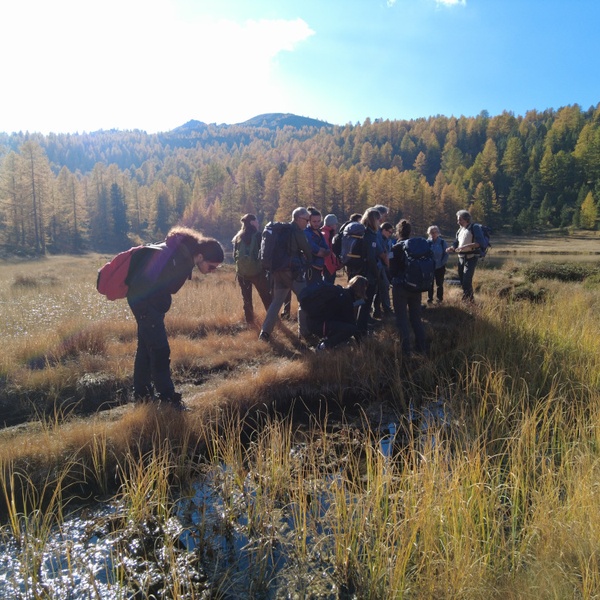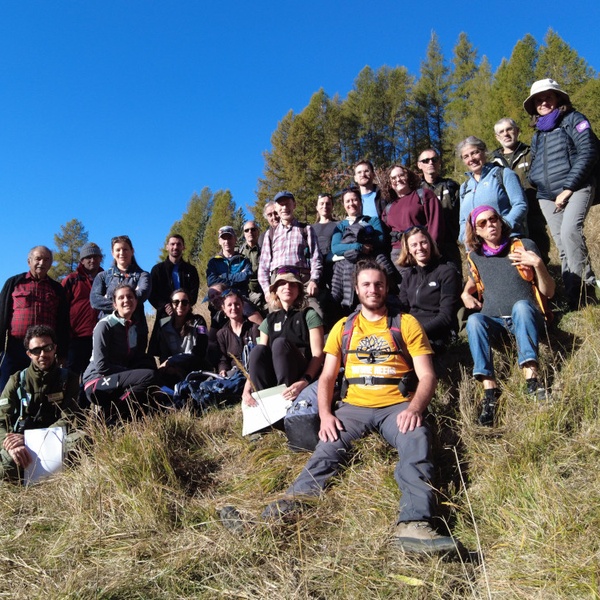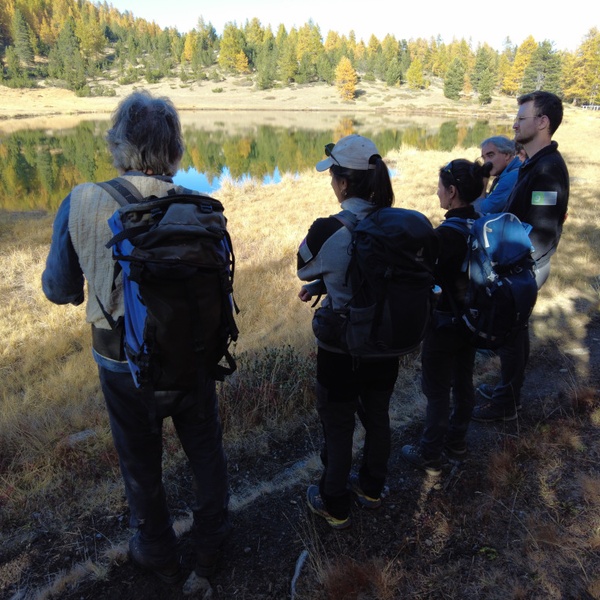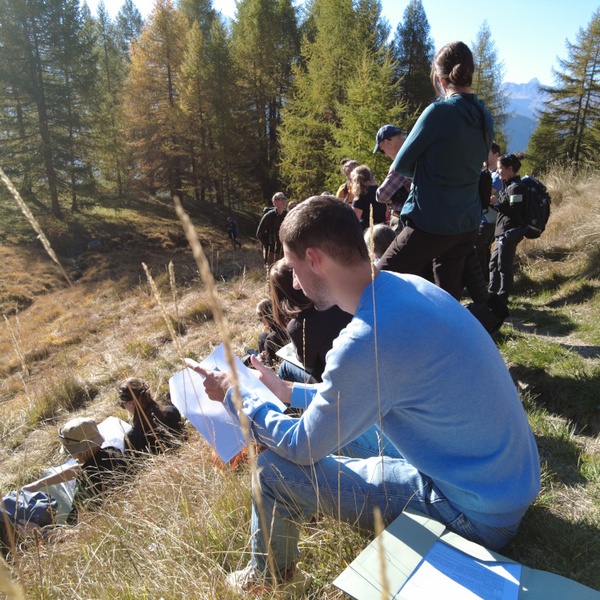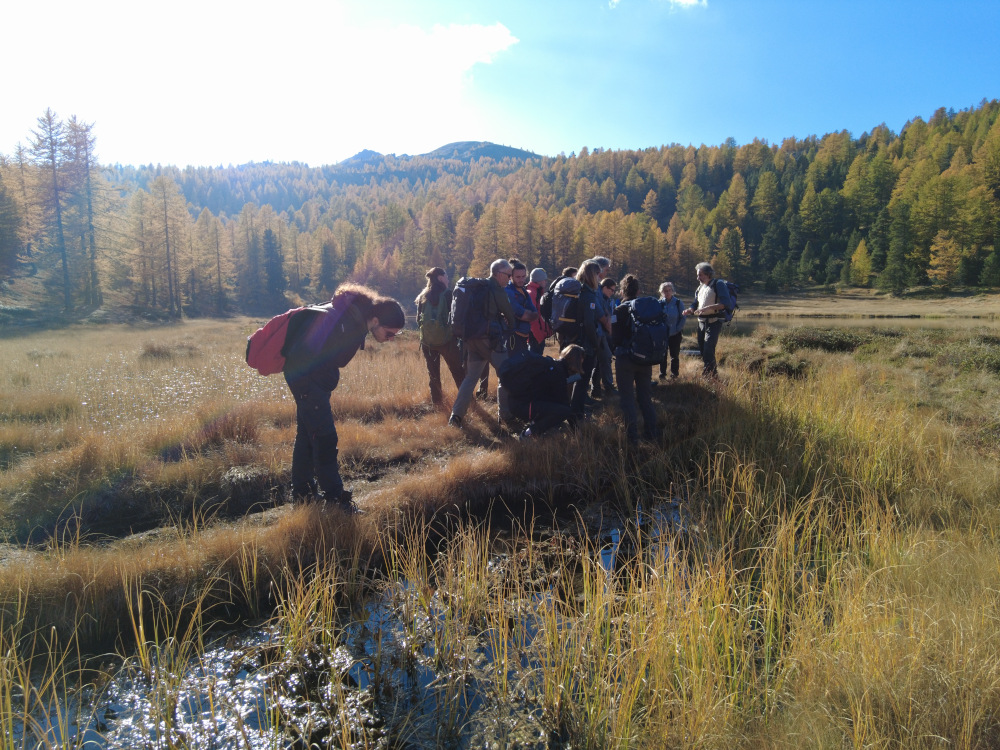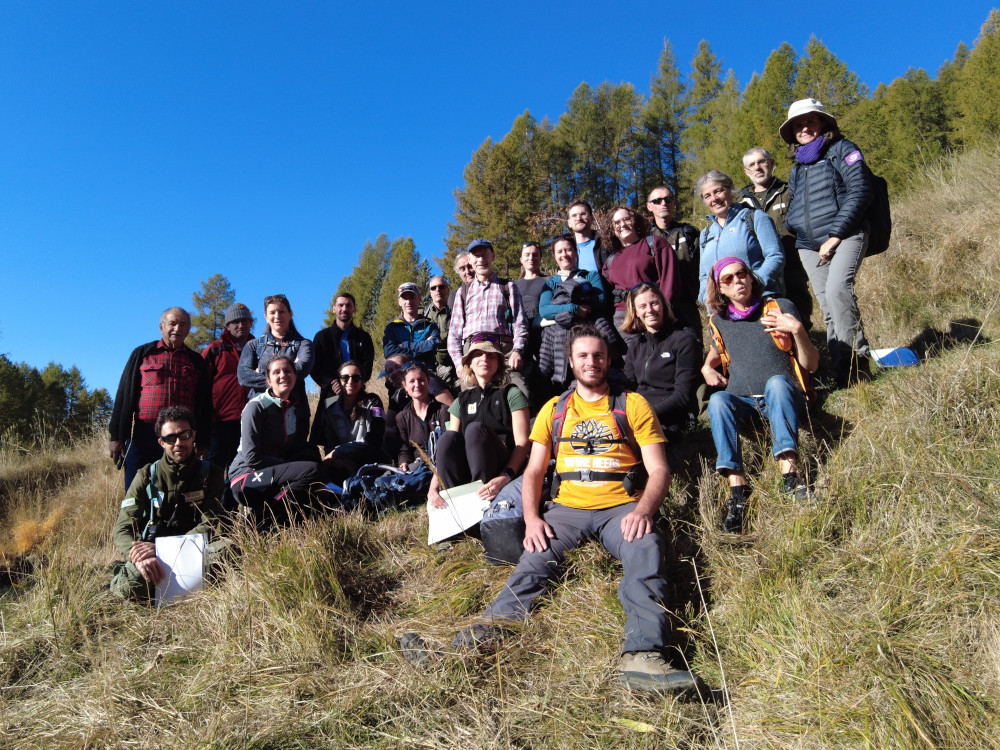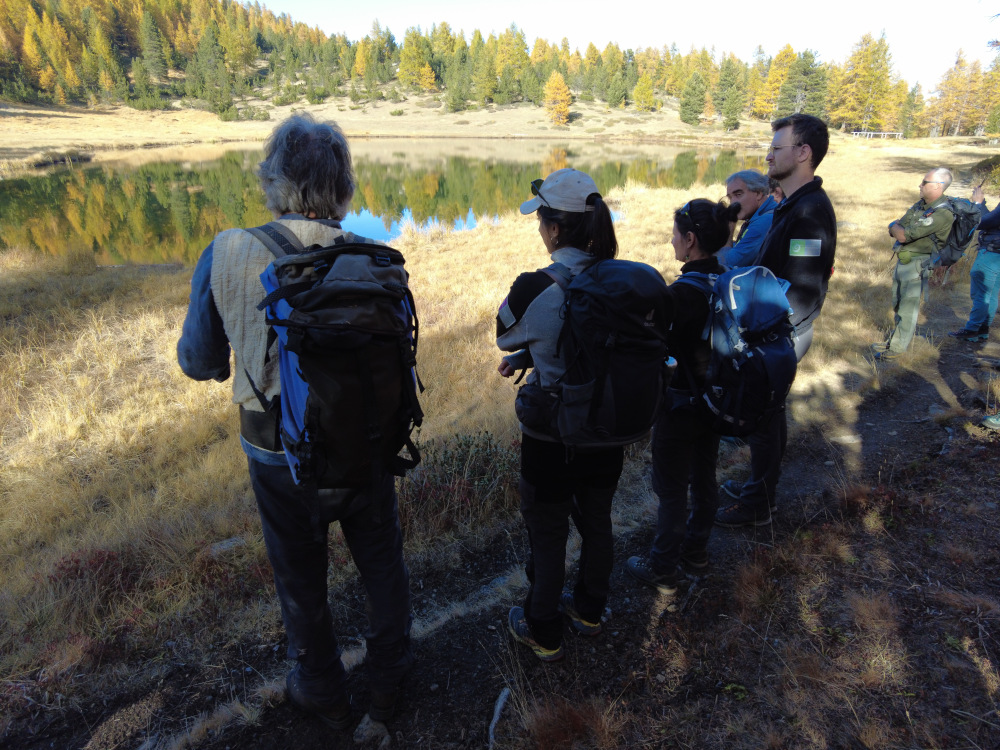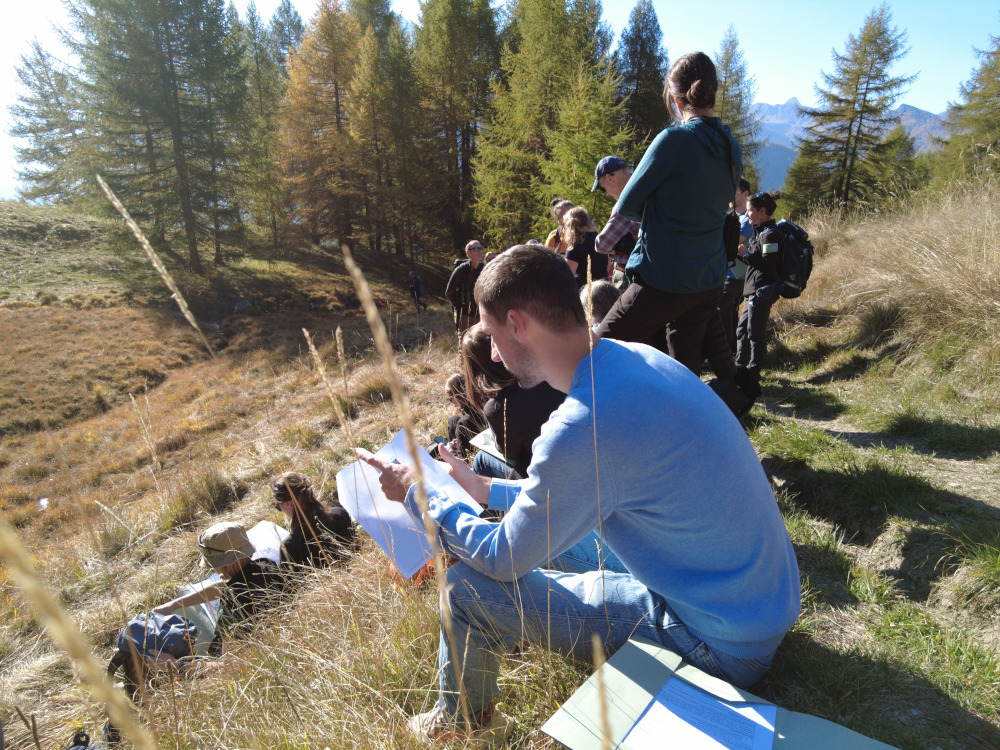Two days of discussion on water resource management
Oct. 23, 2025On October 16 and 17, a meeting was held at the headquarters of Salbertrand of the Protected Areas of the Cottian Alps among the partners of the ALCOTRA ACLIMO project, the cross-border initiative between Italy and France dedicated to water resource management in times of climate crisis. The Italian staff from the Protected Areas of the Maritime Alps, the Gesso Stura River Park, the Regional Natural Park of the Ligurian Alps, and the Gran Paradiso National Park, along with their French colleagues from the Mercantour National Park, the Écrins National Park, and the Vanoise National Park gathered for an intensive two-day discussion on the progress of the work and field visits to observe ongoing initiatives in the Parks of the Cottian Alps.
The Classroom Work
In particular, during the day of Thursday, October 16, the steering committee took place, during which the economic and bureaucratic aspects of initiatives already carried out and those yet to be completed were addressed, with specific attention to the communication actions concerning the production of a docufilm and an educational kit.
Significant space was dedicated to the important scientific initiative that sees collaboration between the partners of ACLIMO and the technicians from CESBIO (Centre d’Études Spatiales de la Biosphère) for the creation of a tool capable of modeling water quantity within a watershed, studying the glacial and snow components to make estimates on summer availability, even starting from historical series capable of providing long-term forecasting tools. The complex and ambitious nature of the study required an in-depth discussion on the critical issues encountered so far and the ways to overcome them.
The Field Visit
Subsequently, the day on Friday, October 17, was dedicated to field visits in the Protected Areas of the Cottian Alps where the interventions planned by the project were hypothesized, to initiate a discussion with partners on the various actions, already implemented or under study, aimed at addressing issues related to water shortages in the pastures.
Champlas - Colle del Sestriere
In the morning, the group visited the Natura 2000 site of Champlas – Colle del Sestriere, characterized by xeric environments, meadows, and particularly dry pastures. Thanks to the guidance of Luciano Gorlier, president of the Champlas du Col Land Association, and Janvier, it was possible to closely observe a series of mobile and fixed troughs created by the association itself for a more prudent and sustainable management of water for grazing cattle, with the aim of reducing waste and soil trampling by livestock.
Furthermore, discussions were initiated with partners from the other parks regarding possible interventions to be implemented for the conservation of the peatland located downstream of the aqueduct that supplies the village of Champlas du Col, which has recently degraded due to the combined effect of erosion, grazing, and drought seasons. Several potential solutions were presented to the attendees in order to prevent the drying out of the wetland area, which while small, holds significant ecological importance.
Cima Fournier and Lago Nero
The first part of the day, therefore, focused on water management aimed at conserving the natural or semi-natural environments of the area and promoting a fundamental economic activity for the mountains such as herding. In the afternoon, however, the group moved to the Natura 2000 Site of Cima Fournier and Lago Nero where the north-facing exposure and terrain configuration allowed the formation of an extensive network of lakes and wetlands particularly threatened by climate change and tourist activity. The visit, conducted by Alberto Selvaggi, a naturalist commissioned by the Park Authority to carry out botanical surveys, concerned the two main basins of the area on which the Parks of the Cottian Alps have carried out various monitoring activities.
Regarding Lago Nero, for several years, there has been a development of aquatic plants that have partially occupied its surface, raising questions about the potential evolution of the habitat in relation to the natural silting of the basin and the issues of use by tourists and fishermen. Analyses revealed that among the vegetation there is also Potamogeton alpinus Balb., a very rare subspecies that can be found in only five locations in Piedmont. In this case, it is essential to carefully evaluate the actions to be undertaken in respect of ecological specificities: should we accommodate the natural evolution of the basin or undertake an intervention to stop the ongoing dynamics?
The second area analyzed is that surrounding Lago di Clot Foiron. Here, on the shores of the basin, nuclei of habitat number 7110 of the European directive, identified as “Active Raised Bogs,” were identified, with the presence of very rare species such as Empetrum nigrum, which determine a particularly strict protection status. Adjacent to the lake is also a peatland, where several species of dragonflies classified as vulnerable on the IUCN Red List were found, for which specific environmental conservation strategies will need to be studied, as harmoniously as possible with the tourist footfall that is particularly abundant in the summer, thanks to the beauty of the locations.
The presence of technical personnel from the main parks of the western Alps, who are extremely knowledgeable in the field, allowed for a fruitful exchange of opinions and experiences for all at a time when the projects will enter the more operational phase after the conclusion of analysis and study work.
You might also be interested in...
- campaign Drops of change at the Valsusa Filmfest
- campaign Climate change is pushing birds higher.
- tactic The Protected Areas of the Cozie Alps project on iNaturalist
- tactic Monitoraggio della Biodiversità Animale in Ambiente Alpino
- tactic Alcotra AClimo
- campaign Drops of change in the Cozie Alps Parks
- tactic Rural Development Complement for the Piedmont Region 2023-2027 intervention SRD04
- campaign Drops of Change: 8 experiences of sustainable water management in agriculture and livestock farming
- campaign Monitorare gli ortotteri: una sperimentazione nei Parchi Alpi Cozie
- campaign Biodiversity at risk: the Emys orbicularis
 Research
Research
